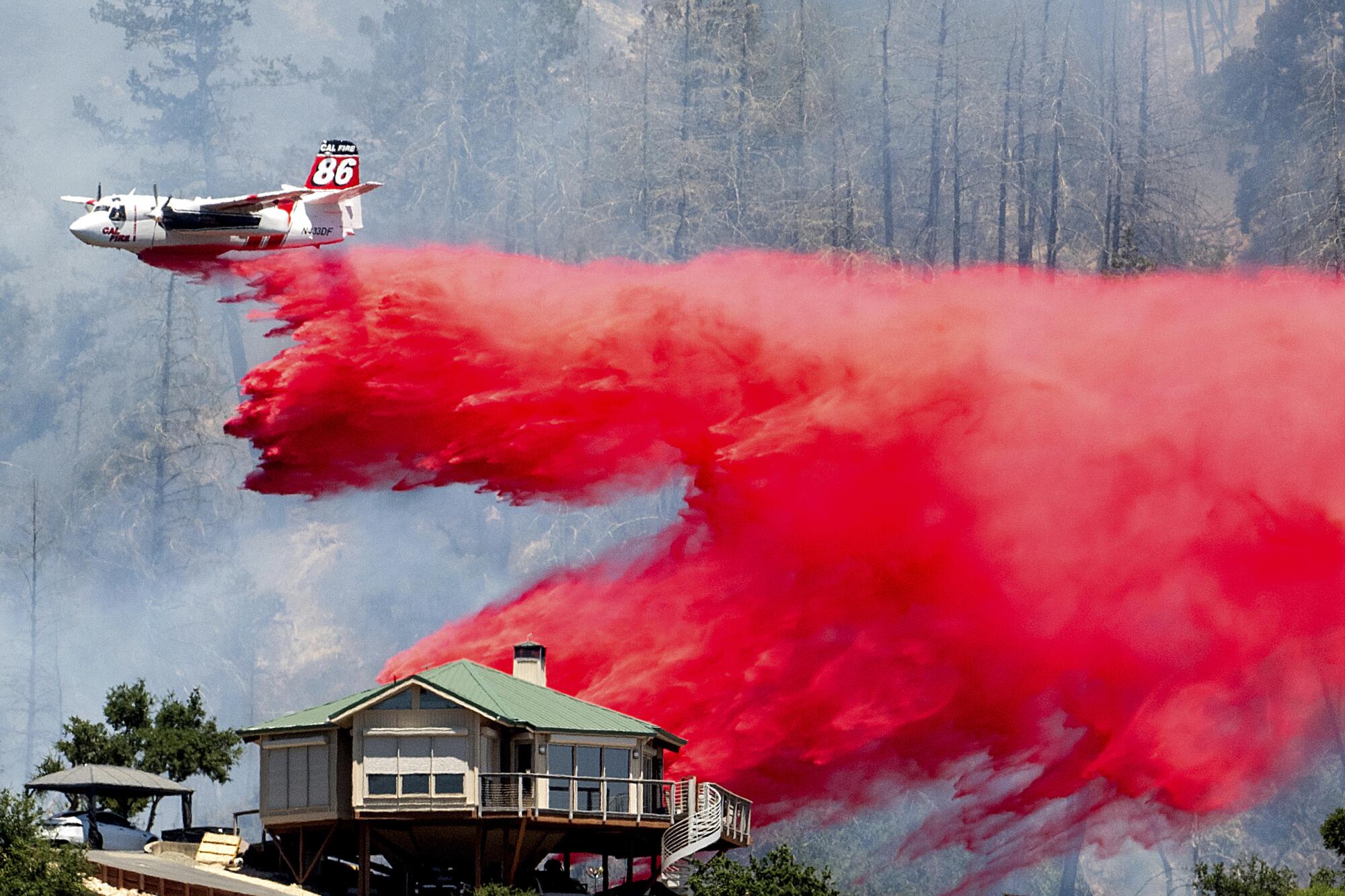
- Share via
California voters will get to decide in November if they want the state to borrow $10 billion to pay for climate and environmental projects — including some that were axed from the budget because of an unprecedented deficit.
The 28-page bill to put the Safe Drinking Water, Wildfire Prevention, Drought Preparedness, and Clean Air Bond Act of 2024on the ballot was approved by both the Senate and Assembly late Wednesday.
This was the last day lawmakers had to approve the climate bond proposal to get the measure on the Nov. 5 ballot.
Senate President Pro Tem Mike McGuire (D-Healdsburg) was acting as governor Wednesday because Gov. Gavin Newsom was in Washington. McGuire is a supporter of the proposed climate bond and was expected to sign the legislation Wednesday night.
“Ensuring that our communities have the resources to protect themselves from wildfires, drought and floods is critical to the long-term success of the Golden State,” McGuire said in a press release Monday.
Sacramento lawmakers have been bombarded with ads and pitches in support of a ballot proposal that would have the state borrow as much as $10 billion.
The language of the bill had been negotiated in secret over the last several months but did not become public until 9:57 p.m. Saturday.
California taxpayers would pay the bond back with interest. An analyst for the Assembly estimated that the $10 billion bond would cost the state $650 million a year for the next 30 years or more than $19 billion.
Scott Kaufman, legislative director at the Howard Jarvis Taxpayers Assn., said the cost could be much higher if the interest rate on the bonds turns out to be higher than the 5% rate the analyst used.
“These bonds will be paid by people decades from now that didn’t even get to vote for their authorization,” Kaufman wrote to the bill’s author in a letter opposing the measure.
Earlier this year, Sacramento legislators had proposals to place tens of billions of dollars of bonds on the November ballot for efforts as varied as stopping fentanyl overdoses and building affordable housing.
But those plans were deflated in March when a $6.4-billion bond measure promoted by Newsom to help homeless and mentally ill people got 50.18% of the vote, barely enough to win approval.
In a recent survey by the Public Policy Institute of California, 64% of likely voters said it was a “bad time” for the state to issue bonds to pay for state projects and programs.
Dozens of environmental groups, renewable energy companies, labor unions, water agencies and social justice advocates have been lobbying state lawmakers to place the climate bond on the ballot.
The lobbying intensified after Newsom proposed spending $54 billion on climate efforts in 2022 but then cut that funding to close recent massive budget deficits.
A solar energy company will soon begin clearing thousands of protected Joshua trees in the Mojave Desert, including many thought to be a century old.
According to the bill, $3.8 billion would be allocated to water projects, including those that provide safe drinking water, recycle wastewater, store groundwater and control floods.
An additional $1.5 billion would be spent on wildfire protection, while $1.2 billion would go toward protecting the coast from sea level rise.
Other money would be used to create parks, protect wildlife and habitats and address extreme heat events.
The language requires that at least 40% of the money go to projects that provide benefits to disadvantaged communities, defined as populations where the median household income is less than 80% of the area average or less than 80% of the statewide median.
Some legislators pulled their support of the bond, saying this provision had recently been weakened so that more money would go to people who were not financially disadvantaged.
Jasmeet Bains (D-Delano) said before the Assembly vote that the definition of vulnerable populations had been diluted. “It’s fundamentally unjust,” she said.
Hundreds of millions of dollars from the bond would benefit private industry. For example, it would provide $850 million to clean energy projects, including the proposed offshore wind farms. Those planned wind projects are already benefiting from subsidies in President Biden’s Inflation Reduction Act.
Governments often take out long-term debt to pay for infrastructure projects that are expensive to build but will last for decades. Yet some of the planned climate bond spending would go to operate programs that could long be over by the time the bonds are paid off. For instance, a portion will go to “workforce development” or the training of workers.
And up to 7% of the money or $700 million can go to administration costs.
“We are already seeing the devastating effects of climate change — more extreme heat waves, catastrophic fires and floods, coastal erosion, and severe droughts,” Sen. Ben Allen (D-Santa Monica) said in a press release. “Every part of our state is affected, and unless we take action now, the cost to address these impacts will become increasingly overwhelming.”
Toward a more sustainable California
Get Boiling Point, our newsletter exploring climate change, energy and the environment, and become part of the conversation — and the solution.
You may occasionally receive promotional content from the Los Angeles Times.









